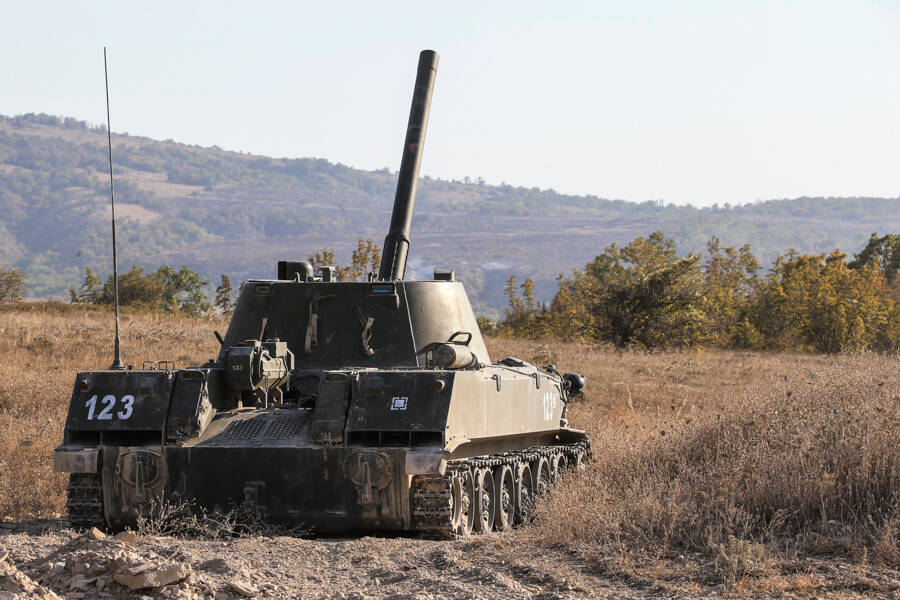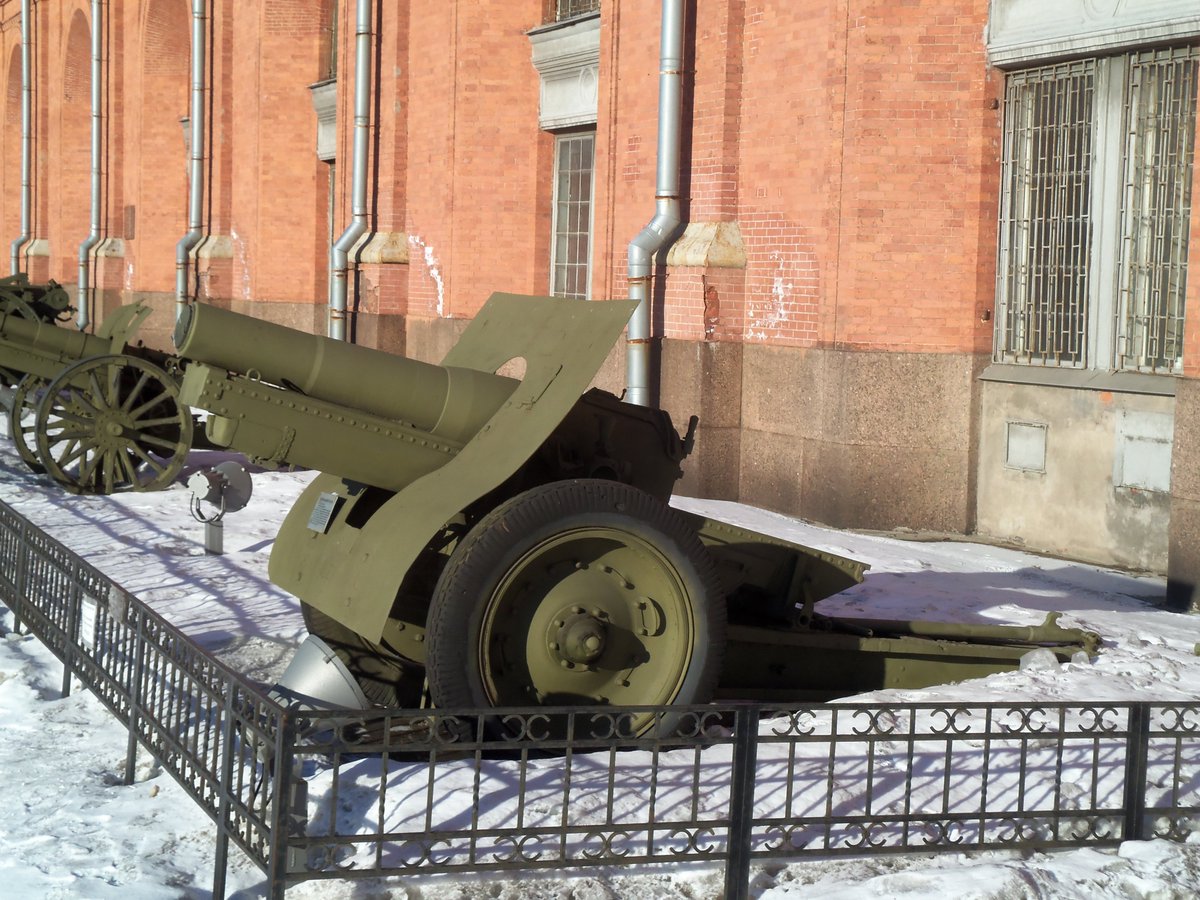(2/30) The Soviet airborne force, the VDV, have a long history of interest in SP guns. In the 1950s and 60s, they employed the ASU-57 and SU-85 SPGs. These were primarily anti-tank/direct fire weapons.




(3/30) As a side note, while it is commonly known as the 'ASU-85' both in the West and even in non-technical Russian literature and websites, the SPG that bears the GBTU index '573' is only ever referred to as 'SU-85' in its manuals.
btvt.info/1inservice/su-…



btvt.info/1inservice/su-…



(4/30) At the same time, indirect fire support was still provided by the towed weapons like the 122-mm D-30 howitzer or semi-SP 85-mm SD-44 of the VDV's artillery units. These imposed serious limitations on mobility, as well as lacked the protection of SPGs.






(5/30) In 1964, Col.-Gen. Vasiliy Margelov, commander of the VDV, advocated for the VDV's mechanisation in order to act as a highly mobile force that could quickly secure gains following Soviet nuclear strikes on NATO territory.






(6/30) This was what led to the development of the BMD-1 airborne IFV. It enabled a quantum leap for the VDV's post-drop mobility, and this in turn led to a need for a suitably mobile indirect-fire support vehicle.
(7/30) Experiments were made using the 2S1 Gvozdika SPA for airborne landings. These proved successful, but in the interests of commonality, the VDV preferred a platform based on the BMD-1.




(8/30) The 2S2 Fialka ('Violet') combined the BMD-1 with the Gvozdika's 122-mm gun, but the lightweight chassis could not withstand the recoil forces. There was another project known as 'Landish' ('Lily of the Valley') using a 120 mm mortar, of which little is known. 

(9/30) At around the same time, the Soviets become interested in developing 'universal' weapons that combined the properties of mortars and light howitzers. They were not the only ones, of course, for the Americans dabbled with the XM70 'Moritzer' too.
jstor.org/stable/45365811

jstor.org/stable/45365811

(10/30) Soviet interests in this period mostly lay in combining 120-mm mortars with recoilless rifles. They were also influenced by the French MO-120-RT-61 rifled mortar, which does not fire fin-stabilised bombs like traditional smoothbore mortars but rifled shells.






(11/30) Soviet intelligence was able to 'acquire' some MO-120-RT-61 shells for testing, and they were suitably impressed by its benefits over traditional fin-stabilised smoothbore mortar bombs. So the Soviets developed their own rifled mortar shells.






(12/30) By 1974, TsNIITochmash had been working on a 120-mm breech-loaded rifled mortar under the codename 'Lilya' ('Lily') Following the failure of the Fialka, they suggested mounting this weapon on it instead. Some political shenanigans follow. 

(13/30) Under the leadership of Avenir Novozhilov and in collaboration with the Motovilikha artillery factory, the Nona-D was completed in 1974. It was now based on the BTR-D airborne APC chassis, but still used the Fialka's superstructure.




(14/30) Nona-D was really more of a proof-of-concept, but its success allowed the Nona project development to be formally authorised in 1976. The first prototype was completed in 1977, and after testing Nona-S was accepted into service in 1981 with the GRAU index 2S9. 

(15/30) The heart of the Nona-S is its breech-loaded 120-mm 2A51. It is mounted in a turret with a maximum elevation of 80°, allowing it to function as a mortar to drop shells almost vertically on targets. The turret has a limited manual traverse of 35° to each side.








(16/30) The weapon is loaded manually. The Nona-S carries up to 25 rounds onboard.
(17/30) Ammunition can also be passed from outside via the hatch and a slide like here.
(18/30) The maximum rate-of-fire is rated at 10 rounds/min, although it reduces to 4-6 when shooting HEAT in aimed direct-fire mode. It takes no more than 30 s to switch between traveling and firing configurations. 

(19/30) The primary ammunition type for the 2A51 is the 19.8 kg 3OF49 rifled HE-Frag bomb with 4.9 kg of A-IX-2 explosive. The 2A51 can throw it at a maximum muzzle velocity of 367 m/s out to 8.8 km. However, it can also use older Soviet 120 mm smoothbore mortar ammo as well. 

(20/30) To put this into perspective, 3OF7, the standard 122-mm D-30 HE-Frag, has a bit under 3 kg of explosive, while 152 mm HE-Frag generally has ~6-7 kg.
(21/30) Other types introduced with the Nona-S include the cluster 3VO32, 3BK19 HEAT-FS, and 3OF50 RAP. Post-Cold War has seen the introduction of thermobaric (3OF74) and laser-guided projectiles (Kitolov-2) as well.








(22/30) The chassis is based on the BTR-D airborne APC, which is in turn based on the BMD-1, but with an extra road wheel. It features a 240 hp 5D20 engine for up to 60 km/h on roads. 2 water-jets can propel it at up to 9 km/h in water.
(23/30) Like all members of the BMD family, it has an adjustable hydropneumatic suspension. This allows it to be packed more compactly for air drops, as well as to adjust the height of the vehicle to suit firing positions as needed.
(24/30) Armour is nothing to speak of. 15 mm of rolled aluminum alloy is not going to do much against anything beyond rifle bullets.






(25/30) In Soviet times, the Nona-S was used exclusively by the VDV. The same more or less remains true for the successor states, and both Ukraine and Russia's airborne forces still operate them.
(26/30) Ukraine is known to have inherited around 45-50 Nona-S, of which 3 are known to have been sold to China prior to 2014. At the time the war began, they were used exclusively by the 25th Airborne Brigade, who had 36.
fraza.com/analytics/2658…



fraza.com/analytics/2658…



(27/30) Due to the fact that the vehicles were not made in Ukraine, the Ukrainians have had problems maintaining them, especially the complex hydropneumatic suspension. However, they are still employed to this day. A few (at least 3) were lost during the 2014-15 fighting.






(28/30) The Russian VDV remains the biggest user of the Nona-S. It serves the same role as it once did in the Soviet VVS. I don't know exactly how many they have.
(29/30) As the VDV have been some of the most hard-committed units in the ongoing Russian invasion, the Nona-S fleet has also suffered fairly notable losses. The short range of the Nona also makes it potentially vulnerable to counter-battery assets.




(30/30) For all its weaknesses, the Nona-S packs quite a punch in a light, mobile package, and judging by the existence of the Nona-SVK and other 120 mm mortar platforms, Nona-S will probably remain in use for the foreseeable future. 

(31/30) A look inside.
Aside, the Wiki article claims 'Nona' is an acronym. I have never seen it described as such in the manual or in the book by Fedoseev. The only reference I can find for it is Patriot Park's website.




The Nona-S technical description I have is not as detailed as one might like on the automotive aspects, so I think if you want those you might need to look for the one titled 'Izdeliye 925'. Usually the ones with the GBTU index will have such info, for SPGs.




• • •
Missing some Tweet in this thread? You can try to
force a refresh

 Read on Twitter
Read on Twitter




























